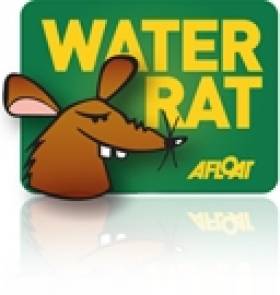Displaying items by tag: Britannia
Dun Laoghaire Plan is a Curate's Egg
When a property doesn't have as many redeeming features as the developer would like, extra effort is put into talking it up by way of the promotional brochure. It could be said that the gloss of the brochure takes the place of the gloss of the property. It is to be earnestly hoped that this isn't the case with the Dun Laoghaire Harbour Company's Consultation Masterplan. While a fine example of the graphic designer's craft, once the observer has penetrated the overly complex web presentation, the content is closer to the curate's egg – a mixture of good and, well, not so good.
The introduction to the plan does a fine job of setting the context, although the author loses some of the high ground by suggesting that Dun Laoghaire is "one of the most beautiful man-made harbours in the world".
The masterplan does recover from this and the other floral verbosity of the opening statements to identify the crucial roles played by marine leisure interests and the town of Dun Laoghaire in the sustainable development of the harbour. The plan regularly refers to the need for careful design to promote greater interaction between town and harbour, an area of failure of past administrations on both sides of the railway tracks.
In the detail, it is interesting to note that the plan shies away somewhat from the flawed concept, mooted in previous versions, that Dun Laoghaire can become a cruise liner port. This is clearly a non-runner in the short to medium term as there is very little to commend Dun Laoghaire over its larger, deeper and more commercially inclined foster parent to the north.
Another area that seems to be set up for failure is the idea that the Harbour Company, in their own words "custodians of this valuable national asset", could contemplate the private ownership of areas of the harbour through property development.
The plan hints at improved access for the watersports constituency, but a serious flaw is the lack of a stronger stance on establishing a safe, wide, non-tidally restricted slipway with easy access to open water, something that does not exist in greater Dublin area outside of the yacht clubs. Such a facility, with the appropriate management, could be self funding.
And in the pie-in-the-sky category is the suggestion of placing a public baths on the inside of the East Pier, a proposal that requires the reclamation of valuable sheltered water.
The plan refers extensively to the diaspora project, but outside of the masterplan itself, this idea has not caught the imagination. It does refer to a maritime element in the project, but does not see this as mainstream. This is a pity, because moving the National Maritime Museum 100 metres from its current location could provide Dun Laoghaire with the iconic attraction it needs to start making it a destination in its own right, changing from its traditional role as a bi-directional gateway. A museum project on the Carlisle Pier, with the potential for floating exhibits alongside, could bring in excess of 1/4 million visitors each year.
The plan refers to similar developments in Leith, near Edinburgh, where former royal yacht Britannia is moored, but curiously neglects to mention Falmouth, where a town of some 22,000 people attracts a similar number to its recently constructed maritime museum. And neither Leith nor Falmouth enjoy the considerable transport network, both marine and land based, that makes Dun Laoghaire so easy to get to.
Comment on this story below





























































